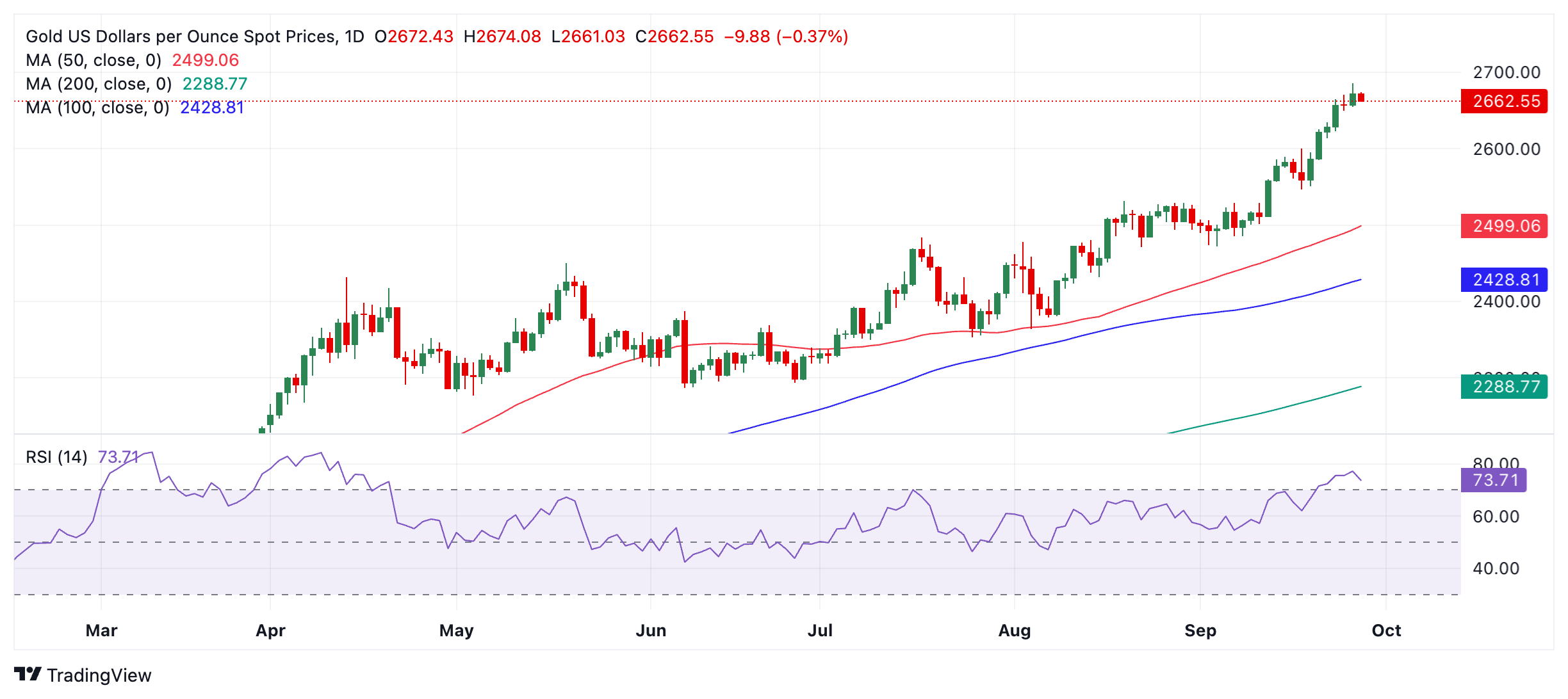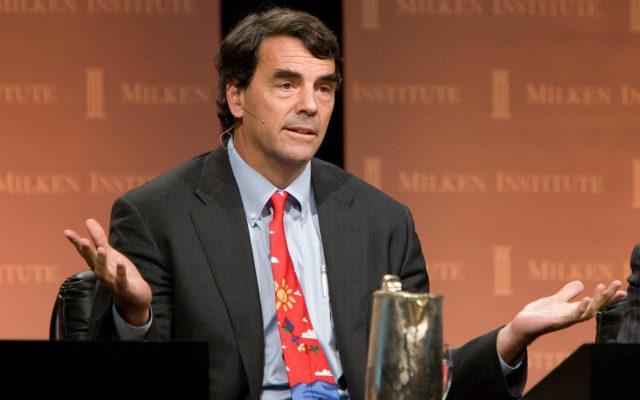- Gold retreats at the end of the week as the effect of Chinese stimulus fades and global central banks take a more cautious stance.
- A stronger U.S. labor market and economic growth data reduce the likelihood that the Fed will ease aggressively.
- Gold price retreats as prospects for less dovish interest rates and a stronger US dollar are bearish.
Gold (XAU/USD) declines to trade at $2,660 per troy ounce on Friday, as the impact of Chinese government stimulus begins to fade and global central banks take a less dovish stance.
Additionally, better-than-expected US data reduced the odds of the Fed making another aggressive 50 basis point (bps) rate cut in November. This weighs further on gold, as expectations that interest rates will fall at a slower pace suggest a high opportunity cost of holding the non-interest-bearing asset. The USD is also recovering, adding to the precious metal’s headwinds.
Gold declines after hitting new all-time highs
Gold retreats after hitting a new all-time high of $2,685 on Thursday, as the effect of the additional CNY1 trillion stimulus announced by the Chinese Politburo appears to have been priced in and global central banks tend to take a less dovish stance. The Central Bank of Sri Lanka kept rates unchanged at its meeting, and the Swiss National Bank (SNB) and Bank of Mexico (Banxico) cut rates by only 25 bps. Meanwhile, a recent Reuters poll showed that the Reserve Bank of India (RBI) is expected to cut interest rates by a modest 50 bps in the next six months.
Furthermore, the expectation that the Fed would cut interest rates by half a percentage point at its November meeting has been reduced after positive US macroeconomic data. US initial jobless claims showed a decreased to 218K in the week ending September 20, and the final estimate for second-quarter Gross Domestic Product (GDP) growth remained in line with previous estimates at a healthy 3.0% annualized. Additionally, US durable goods orders beat estimates and recent overall US data depicts a soft landing for the economy that runs counter to market bets for aggressive monetary easing.
The probability of a 50 bps rate cut at the Fed’s November meeting has fallen to 50% from over 60% before the data, according to the CME FedWatch tool.
Gold could also be seeing reduced safe haven flows as fears that the conflict between Israel and Hezbollah could lead to a ground offensive have not materialized. Although tensions remain high and a 21-day ceasefire agreement proposed by the Americans was rejected on Thursday, the situation has not escalated either.
On Wednesday, Israel Defense Forces chief Herzi Halevi told his troops they should prepare for a ground offensive in Lebanon. If such an invasion were to occur, it would further increase risk aversion and increase safe haven flows into the yellow metal.
Technical Analysis: Gold retreats from new all-time highs
Gold retreats after hitting another all-time high of $2,685 on Thursday.
That said, overall it is still in an uptrend in the short, medium and long term. Since it is a fundamental principle of technical analysis that “the trend is your friend”, the odds further favor the upside for the yellow metal.
XAU/USD Daily Chart
Gold is also now overbought, according to the Relative Strength Index (RSI) momentum indicator, increasing the chances of a deeper pullback developing. He also advises traders not to add to their long positions. If gold breaks out of overbought, it will be a signal to close long positions and sell shorts, suggesting that an even deeper correction is developing.
That said, the RSI can remain overbought for quite long periods in a strongly trending market, and if gold breaks to higher highs, it will further reconfirm the metal’s bullish bias. The next upside targets are the round numbers $2,700 and then $2,750.
If a correction develops, firm support lies at $2,600 (September 18 high), $2,550, and $2,544 (0.382 Fibonacci retracement of the September rally).
Gold FAQs
Gold has played a fundamental role in human history, as it has been widely used as a store of value and medium of exchange. Today, apart from its brilliance and use for jewelry, the precious metal is considered a safe-haven asset, meaning it is considered a good investment in turbulent times. Gold is also considered a hedge against inflation and currency depreciation, since it does not depend on any specific issuer or government.
Central banks are the largest holders of Gold. In their aim to support their currencies in turbulent times, central banks tend to diversify their reserves and purchase Gold to improve the perception of strength of the economy and currency. High Gold reserves can be a source of confidence for the solvency of a country. Central banks added 1,136 tons of gold worth about $70 billion to their reserves in 2022, according to data from the World Gold Council. This is the largest annual purchase since records exist. Central banks in emerging economies such as China, India and Türkiye are rapidly increasing their gold reserves.
Gold has an inverse correlation with the US Dollar and US Treasuries, which are the main reserve and safe haven assets. When the Dollar depreciates, the price of Gold tends to rise, allowing investors and central banks to diversify their assets in turbulent times. Gold is also inversely correlated with risk assets. A rally in the stock market tends to weaken the price of Gold, while sell-offs in riskier markets tend to favor the precious metal.
The price of Gold can move due to a wide range of factors. Geopolitical instability or fear of a deep recession can cause the price of Gold to rise rapidly due to its status as a safe haven asset. As a non-yielding asset, the price of Gold tends to rise when interest rates fall, while rising money prices tend to weigh down the yellow metal. Still, most of the moves depend on how the US Dollar (USD) performs, as the asset is traded in dollars (XAU/USD). A strong Dollar tends to keep the price of Gold in check, while a weaker Dollar is likely to push up Gold prices.
Source: Fx Street
I am Joshua Winder, a senior-level journalist and editor at World Stock Market. I specialize in covering news related to the stock market and economic trends. With more than 8 years of experience in this field, I have become an expert in financial reporting.








